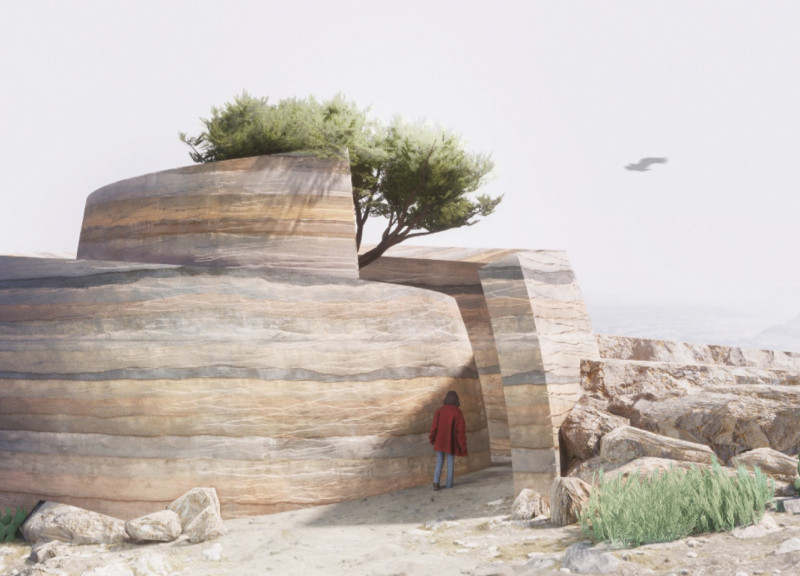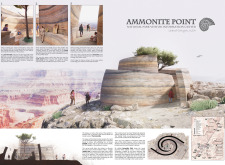5 key facts about this project
The visitor information center at Ammonite Point is located in the Grand Canyon, serving as a space for education and interaction with the natural environment. The design focuses on creating an experience that reflects the geological characteristics of the canyon. It aims to immerse visitors in the region's rich history while providing a comfortable space for learning.
Concept and Spatial Flow
The design begins with a narrow entrance that captures the feeling of walking through a crevice or cave. This unique feature invites visitors into the geological context of the canyon. As people travel through this initial space, they reach a larger area that showcases the fossils found in the Grand Canyon. The transition from a tight entry to a spacious interior encourages curiosity and engagement with the displays.
Connection to Natural Forms
The structure's shape is influenced by the Ammonite fossil, which has a spiral design aligned with natural patterns. This approach enhances the building's appearance and supports a functional layout that guides movement through the space. Curved walls and integrated seating create comfortable areas where visitors can gather and reflect on the exhibits.
Materiality and Contextual Integration
Rammed earth is used for the pavilion's walls, connecting the building to its environment. The choice of material reflects the geological layers present in the Grand Canyon. The color and texture of rammed earth evoke the natural surroundings, anchoring the pavilion in its setting and emphasizing its relationship to the landscape.
Panoramic Viewing Experience
As visitors conclude their time in the pavilion, they navigate through another narrowing space that leads to a breathtaking view of the Grand Canyon. This final experience captures the connection between the built environment and the natural landscape. The careful design of the approach enhances the impact of the view, allowing visitors to appreciate the grandeur of the canyon in a meaningful way.



















































